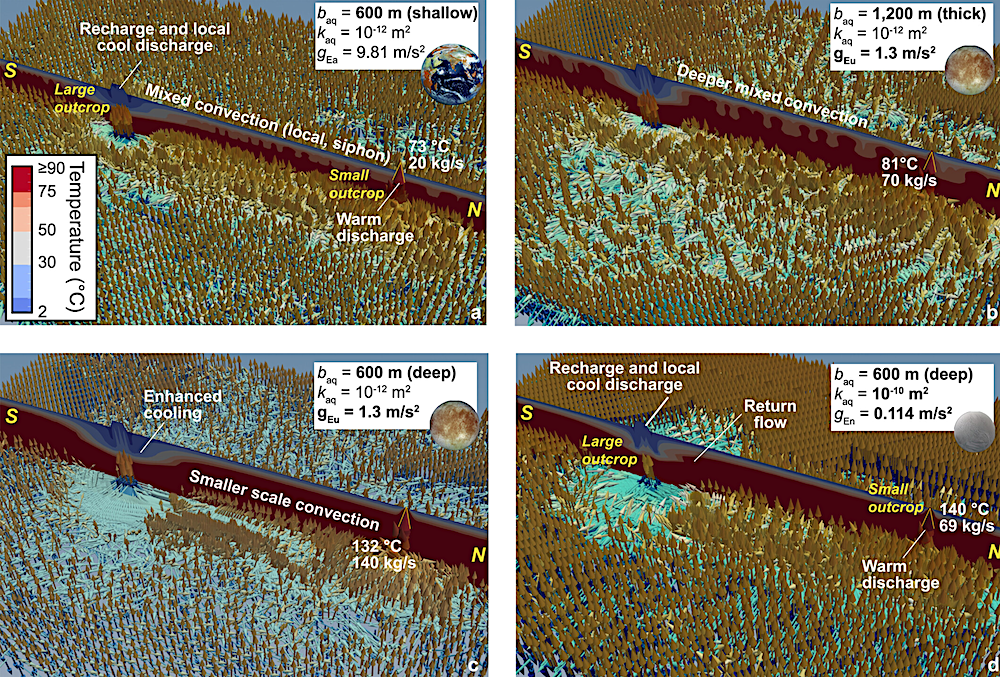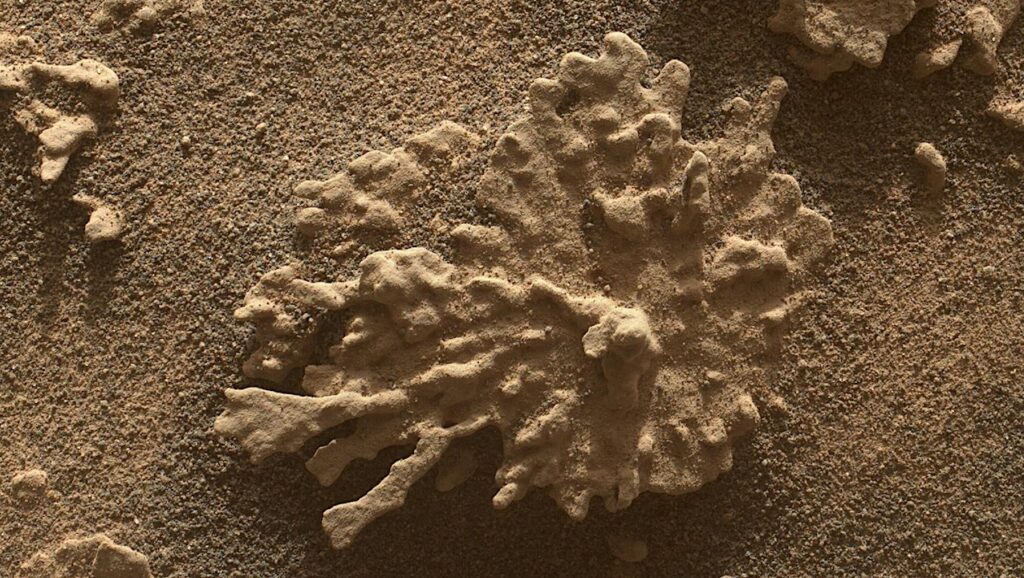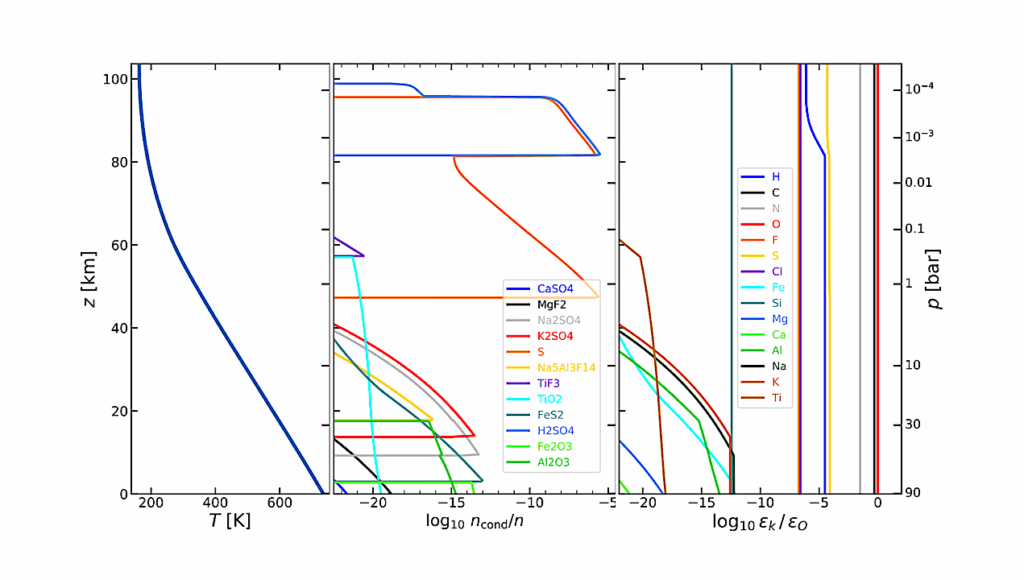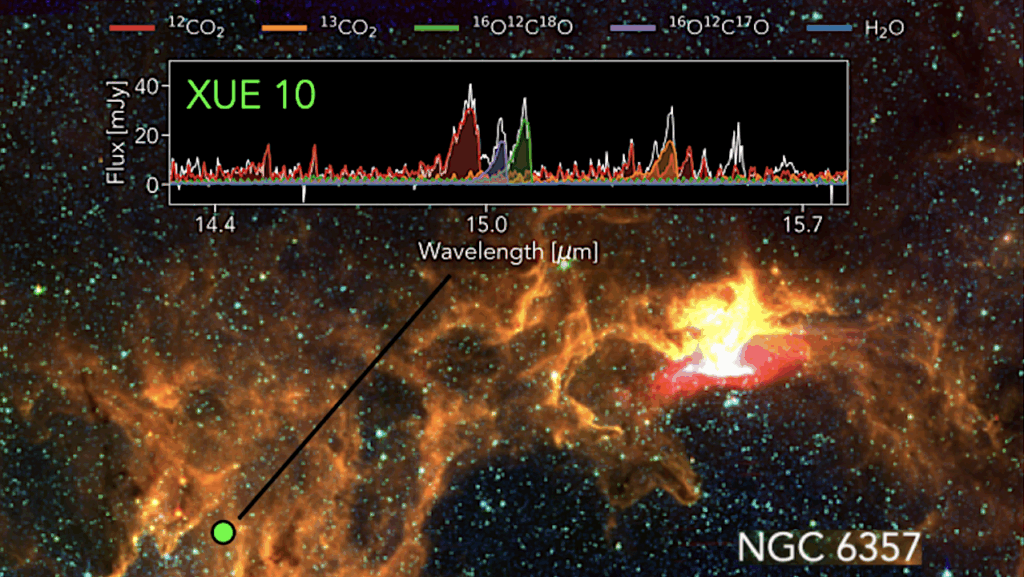Sustaining Hydrothermal Circulation With Gravity Relevant to Ocean Worlds

Some ocean worlds may sustain active, seafloor hydrothermal systems, but the characteristics and controls on fluid-heat transport in these systems are not well understood.
We developed three-dimensional numerical simulations, using a ridge-flank hydrothermal system on Earth as a reference, to test the influence of ocean world gravity on fluid and heat transport. Simulations represented the upper ∼4–5 km below the seafloor and explored ranges of: heat input at the base, aquifer thickness, depth, and permeability, and gravity values appropriate for Earth, Europa, and Enceladus. We tested when a hydrothermal siphon could be sustained and quantified consequent circulation temperatures, flow rates, and advective heat output.
Calculations illustrate a trade-off in energy between the reduction of buoyancy at lower gravity, which tends to reduce the primary forces driving fluid circulation, and the concomitant reduction in secondary convection, which consumes available energy. When a siphon was sustained under lower gravity, circulation temperatures tended to increase modestly (which should lead to more extensive geochemical reactions), whereas mass flow rates and advective heat output tended to be reduced. Deeper subseafloor circulation resulted in higher temperatures and flow rates, with a deeper, thin aquifer being more efficient in removing heat from the rocky interior.
Water-rock ratios were lower when gravity was lower, as was the efficiency of heat extraction, whereas the time required to circulate the volume of an ocean-world’s ocean through the seafloor increased. This may help to explain how small ocean worlds could sustain hydrothermal circulation for a long time despite limited heat sources.

Field system on Earth and basis for simulations used in this study. (a) Field site on ∼3.5 M.y. old seafloor of the Juan de Fuca Plate, located between the Juan de Fuca Ridge (to west) and the Cascadia Subduction Zone (to east). A small discharging outcrop to the north (Baby Bare) and a larger recharging outcrop to the south (Grizzly Bare) are separated laterally by ∼50 km and penetrate through regional sediments (Davis et al., 1992; Fisher, Davis, et al., 2003; Fisher, Stein, et al., 2003; Hutnak et al., 2006; Winslow et al., 2016). (b) Basis for sustaining a hydrothermal siphon. Cool recharge of bottom water results in relatively dense pore fluid, in contrast to conditions at a connected discharge site, where warmer and less dense fluid fill pores. This results in higher pressure at depth below the recharge site, driving flow to the discharge site, where it escapes at the seafloor (modified from Fisher & Wheat, 2010). (c) Geometry of the numerical domain used to simulate outcrop-to-outcrop hydrothermal circulation in an earlier study (Winslow & Fisher, 2015) and modified for use in the present study. Dashed line running South-to-North indicates the location of profiles shown in Figure 3. Please see a more detailed representation of the grid in Supporting Information S1 (Figure S1). — Journal of Geophysical Research: Planets
Key Points
- Outcrop-to-outcrop hydrothermal circulation, driven by heating from below, can be sustained under ocean-word gravity
- Lower gravity tends to generate higher circulation temperatures, lower mass fluxes, and reduced heat output
- Lower gravity also results in lower water-rock ratios and should create more evolved fluids and a longer circulation time
Plain Language Summary
Ocean worlds are planetary bodies that have a liquid ocean, often under an icy shell or within the rocky interior. In Earth’s solar system, several moons of Jupiter and Saturn are ocean worlds. Some ocean worlds are thought to have hydrothermal circulation, where water, rocks, and heat combine to drive fluids in and out of the seafloor. Hydrothermal circulation would impact the chemistry of the water and rock of ocean worlds, and could help life to develop deep below the icy surface.
This study shows results from computer simulations of hydrothermal circulation, based on a well-understood system on Earth, to measure the influence of lower gravity at values appropriate for ocean worlds smaller than Earth. The simulations with ocean world (lower) gravity result in fluid circulation much like that occurring on and below Earth’s seafloor, but with several important differences.
Lower gravity reduces buoyancy, so fluids don’t become as light when heated, and this reduces flow rates. This can raise temperatures in the circulating fluid, which could allow more extensive chemical reactions, perhaps including those that sustain life. Lower flow means less heat transport, and this could help these flows to last longer in an ocean world.

Perspective views of simulation output showing vectors (colored by direction) and a single vertical slice (colored by temperature, T) through the hydrothermal aquifer. Viewing location is from the east-northeast looking west-southwest. All of these simulations sustained a hydrothermal siphon. In each panel, the T slice is oriented south-to-north (left-to-right), with smaller outcrop to north. The temperature slice has been “elevated” above the seafloor for viewing to show conditions in the aquifer. Sediment has been removed for display purposes, only 20% of flow vectors are shown for clarity, and vectors are sized by flow magnitude but colored by direction (gold = up, dark blue = down, tan to cyan = near horizontal flow). The largest flow vector is at discharge, highlighted with thin gold lines, and other vectors are sized relative to this one on a Loge scale. Heat input at the base of domain varies with E-W location, with a median of 196 mW/m2. (a) The aquifer thickness is baq = 600 m, permeability is kaq = 10−12 m2, with Earth gravity (gEa). Siphon flow is from the big outcrop to the small outcrop, with discharge of Fsiph = 20 kg/s at temperature Tsiph = 73°C. Conditions are cool surrounding the large outcrop due to vigorous recharge, much of which discharges immediately through the same edifice, but some of the fluid continues north to the small outcrop. There is vigorous secondary (local) convection during net siphon transport from south to north, as shown in the T profile and the vector pattern. (b) As in panel (a), but with thick/deep aquifer (baq = 1,200 m) and Europa gravity (gEu = 1.3 m/s2). Note deeper mixed convection with larger plumes, faster discharge, and higher hydrothermal temperature. (c) As in panel (a), but with a thin/deep aquifer (baq = 600 m) and Europa gravity (gEu = 1.3 m/s2). Compared to panels (a) and (b), local convection occurs at a smaller scale, there is more cooling around the larger outcrop, and Fsiph and Tsiph are elevated. (d) As in panel (c), but with higher aquifer permeability (kaq = 10−10 m2) and Enceladus gravity (gEn = 0.114 m/s2). Local convection is weaker, Fsiph is reduced (but still higher than for the Earth system in a), and Tsiph ≈ 140°C. — Journal of Geophysical Research: Planets
Sustaining Hydrothermal Circulation With Gravity Relevant to Ocean Worlds, Journal of Geophysical Research: Planets (open access)
Astrobiology








